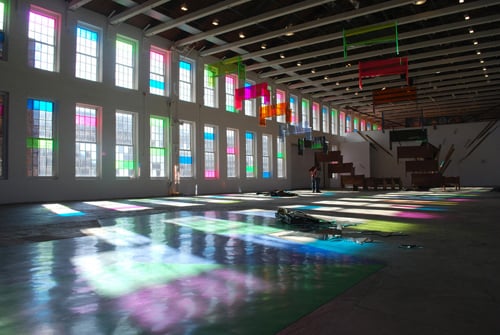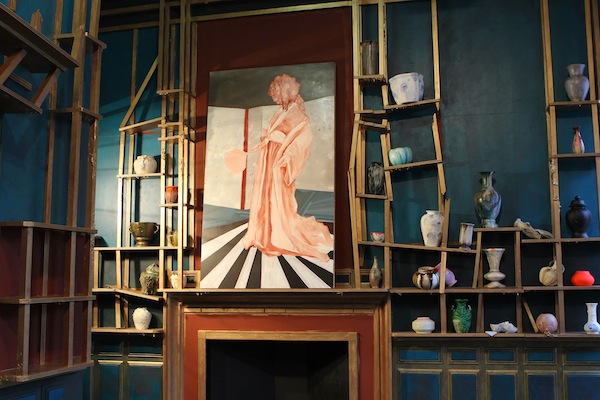Art & Exhibitions
MASS MoCA Awaits Vote on Its Huge Expansion
The contemporary art Institution seeks more semi-permanent solo shows.

The contemporary art Institution seeks more semi-permanent solo shows.

Alexandra Peers

The Massachusetts State Legislature is expected to vote this summer on a measure to fund a huge expansion at New England arts institution MASS MoCA.
Adding about 150,000 square foot of usable capacity, the expansion “would create a large quarter-mile-long figure-8 [shaped] layout—essentially double our exhibition space,” said longtime director Joseph Thompson in an interview with artnet News. The $25.4 million grant, in tandem with private monies already partly raised, would allow the Berkshires cultural institution to renovate more of its existing 26-building campus. The expansion would “open up a much more gracious circulation for the museum,” noted Thompson.
The measure has already passed several hurdles in the legislature, and museum staffers deem passage likely.
The sprawling Mass MoCA site, on the National Register of Historic Places, was previously a cotton-printing factory dating from the Civil War era and a Sprague Electronics factory for much of the 20th century. It opened 15 years ago as a visual and performing arts institution.
Thompson’s dream for the new space, he said, would be to house two or three new artworks on long-term loan by artist’s estates or art foundations. One model for this is the museum’s three-floor Sol LeWitt exhibition, which is on loan for 25 years. Similarly, an Anselm Kiefer show opened in the fall of 2013 and will be on view at least through the next decade. Both artist’s solo installations have their own dedicated buildings. “The long-term loan idea offers the best of both worlds,” Thompson noted, in that the non-collecting institution can avoid the problems and costs of a permanent collection.
This summer at the North Adams, Massachusetts, museum, among other highlights, is a Teresita Fernández show, a video art exhibition, and Darren Waterston‘s Filthy Lucre (2014). It is a detailed, disheveled recreation of James McNeill Whistler‘s Harmony in Blue & Gold: The Peacock Room (1876), currently installed in the Freer Gallery in Washington, DC.
The Whistler original is famed for the dispute the artist had with the wealthy and egotistical collector who commissioned it. Waterston’s take, complete with collapsing bookcases and broken antiquities, is the current artist’s salute “from one gilded age to another,” said Thompson.

Darren Waterston, Uncertain Beauty (2014), installation view.
Courtesy Mass MoCA.
Thompson, one of the few museum directors to hold an MBA (from Wharton, with a specialty in public policy), has organized exhibitions ranging from the art of David Byrne to the Clocktower project to Robert Wilson’s 14 Stations to two noted works by contemporary Chineseartists: Cai-Guo-Qiang’s Inopportune and Xu Bing’s enormous Phoenix (currently on view at the Cathedral of St. John the Divine on New York’s Upper West Side).
In an aside, Thompson said that, despite his nearly three-decade tenure at MASS MoCA, or perhaps because of it, he is not tempted by any of the handful of museum-director positions opening predicted as likely to open up in coming months. “We’re just beginning here,” he said. Plus, MASS MoCA, with its strong performing arts and Bang on a Can music programs, has a character he wouldn’t find anyone else, he believes. “It’s a honky-tonk.”